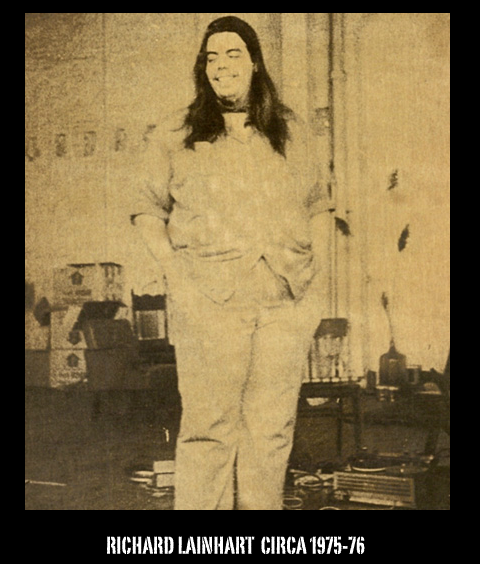Richard Lainhart about the work’s origin:
"White Night" was composed and recorded in the late fall of 1974 at the State University of New York at Albany in the Coordinated Electronic Music Studio (CEMS). CEMS was created by my composition teacher Joel Chadabe with design and custom fabrication by Robert Moog and was, at the time, the largest integrated Moog modular synthesizer studio in the world.
The piece consists of a dense, continuous four-note chord, each note in the chord recorded in a separate pass to one track on a Scully 4-track studio recorder. Each track consists of a single sine wave oscillator which is frequency modulated by a group of eight additional sine wave oscillators. Those oscillators are all tuned to different tones, each harmonically related to the fundamental chord tone. The amplitude of each harmonic oscillator is continuously varied under the control of an individual sequencer, and each sequencer is free-running - that is, the sequencers are not synchronized to each other, but rather running in their own independent timebases.The result is a continuously-changing complex harmonic waveform which modulates the frequency of the chord tone oscillator, generating a continuously-changing complex timbre based on the fundamental pitch of the note.
The center tone of "White Night" is 212 Hz, slightly higher than the G below Middle C. The other notes create a chord consisting of a perfect fifth below the center tone, a major seventh just below the center tone, and a major second above the center tone. "White Night" was composed without reference to the standard A-440 tuning system, as we had no such pitch reference in the studio; I just picked a center tone that felt right, and went from there. As such, "White Night" lives in its own pitch world.
The title "White Night" came about so: it was late December in upstate New York when I was finishing the piece, and a blizzard passed through town the night of the final mix. As I sat in the glow of the sequencers and tape decks in the University studio listening to the final version, I looked out the window and saw a security light on a building opposite the studio illuminating the blowing snow as it drifted off the roof. All I could see was the snow swirling in the light against the blackness; a moving painting continually drawn, erased, and redrawn, always changing, but always the same. It may sound bleak, but it wasn't - it was beautiful. It seemed to me that the image of the dancing whiteness perfectly matched the sound of the piece, and so I called it "White Night" to commemorate that evening of wind and snow."
The center tone of "White Night" is 212 Hz, slightly higher than the G below Middle C. The other notes create a chord consisting of a perfect fifth below the center tone, a major seventh just below the center tone, and a major second above the center tone. "White Night" was composed without reference to the standard A-440 tuning system, as we had no such pitch reference in the studio; I just picked a center tone that felt right, and went from there. As such, "White Night" lives in its own pitch world.
The title "White Night" came about so: it was late December in upstate New York when I was finishing the piece, and a blizzard passed through town the night of the final mix. As I sat in the glow of the sequencers and tape decks in the University studio listening to the final version, I looked out the window and saw a security light on a building opposite the studio illuminating the blowing snow as it drifted off the roof. All I could see was the snow swirling in the light against the blackness; a moving painting continually drawn, erased, and redrawn, always changing, but always the same. It may sound bleak, but it wasn't - it was beautiful. It seemed to me that the image of the dancing whiteness perfectly matched the sound of the piece, and so I called it "White Night" to commemorate that evening of wind and snow."
 |
| white night |


Keine Kommentare:
Kommentar veröffentlichen